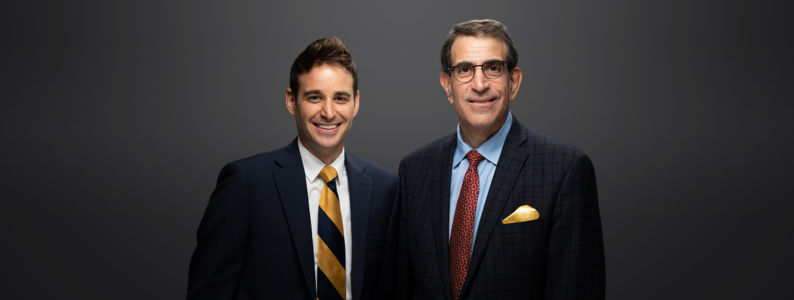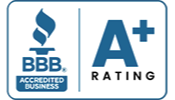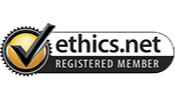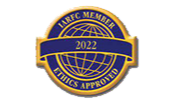In recent years, Artificial Intelligence (AI) tools like ChatGPT have captured the world’s attention. From writing assistance to quick explanations on complex topics, AI has become a go-to source for instant answers. But when it comes to financial advice, especially about your investments, retirement, or estate planning, AI’s limits have become increasingly clear.
OpenAI and other developers have tightened restrictions on what chatbots can say about financial products, investments, and personal money management. And for good reason: while AI can process massive amounts of data, it cannot replace the judgment, fiduciary responsibility, and human understanding of a real-world financial advisor.
In this article, we’ll explore why you can no longer rely on ChatGPT for financial advice, what led to these changes, and why working with a trusted fiduciary advisor, like the professionals at Agemy Financial Strategies, remains the smartest move for your long-term financial health.
The Rise (and Regulation) of AI Financial Guidance
When ChatGPT first launched, many users began using it for quick financial questions, from asking about investment strategies and stock recommendations to seeking advice on retirement planning.
AI’s ability to instantly generate detailed, data-backed explanations made it feel like an expert. For a while, you could ask ChatGPT things like:
- “Should I invest in stocks or bonds right now?”
- “How can I reduce my taxes before retirement?”
- “What’s the best way to maximize my 401(k)?”
But this quickly became problematic. Because AI chatbots don’t have the ability to provide personalized or regulated advice, users began to act on generalized information that wasn’t suitable for their financial situations. This raised red flags with compliance regulators, financial authorities, and the developers themselves.
In response, companies like OpenAI placed stronger content restrictions on financial topics to prevent users from mistaking chatbot responses for professional, fiduciary advice.
Why ChatGPT (and Other AI Tools) Can’t Give You Real Financial Advice Anymore

ChatGPT’s policies now explicitly prevent it from offering personalized financial, investment, or legal advice. That means if you ask for stock recommendations, retirement strategies, or personalized portfolio guidance, you’ll likely receive a disclaimer or be redirected to seek help from a financial advisor.
Here’s why this change was necessary, and why it actually benefits consumers.
1. AI Is Not a Licensed Financial Professional
Financial advisors,wealth managers, and fiduciaries are bound by strict legal and ethical standards. They must hold certifications such as Series 65 or CFP® (Certified Financial Planner) designations, and they’re regulated by the SEC and state authorities.
ChatGPT, on the other hand, has no credentials, no fiduciary duty, and no oversight. While it can summarize data, it cannot analyze your financial goals, risk tolerance, or personal circumstances with the accountability required by law.
2. AI Can’t Account for Personal Context
No two financial situations are the same. Your age, family situation, assets, health, and goals all play a crucial role in shaping a sound financial strategy.
AI might know general investing principles, but it doesn’t know you. It can’t adjust its recommendations based on emotional factors like your comfort with risk, your spouse’s retirement plans, or your long-term tax implications.
Real financial planning is about understanding the human behind the numbers, and that’s something technology simply can’t replicate.
3. Misinformation and Hallucination Risks
AI chatbots sometimes “hallucinate,” a term used when models confidently present false information as fact. Imagine receiving a fabricated tax strategy or an incorrect explanation of a retirement rule.
Even a small error could lead to major financial consequences. AI doesn’t bear responsibility for mistakes; you do. That’s why relying on chatbots for investment or tax decisions can be risky and costly.
4. Regulatory Compliance
The financial industry is one of the most heavily regulated in the world. From FINRA to the SEC, every financial recommendation must meet specific disclosure and compliance standards.
ChatGPT and other AI tools can’t meet those standards. By restricting financial advice, OpenAI and others are protecting consumers and themselves from potential legal and ethical issues.
5. No Accountability or Liability
When you work with a fiduciary advisor, that advisor is legally required to act in your best interest. If they don’t, there are clear channels for recourse.
AI, however, carries no liability. It doesn’t take responsibility for its advice or outcomes. That lack of accountability makes it unfit for something as important as your financial future.
Why Real-World Financial Advisors Still Matter

In an era where automation is everywhere, the role of a human advisor has never been more valuable. While technology continues to enhance how we plan and invest, human financial advisors bring insight, empathy, and experience that algorithms can’t.
Here’s why turning to real-world advisors like Agemy Financial Strategies is more important than ever:
1. Fiduciary Responsibility, a Promise You Can Trust
Agemy Financial Strategies operates as a fiduciary firm, meaning their advisors are legally obligated to put your best interests ahead of their own.
Unlike brokers or robo-advisors who may earn commissions on the products they recommend, fiduciary advisors provide unbiased guidance rooted in your goals, not theirs. That trust and transparency are something no chatbot can replicate.
2. Comprehensive, Personalized Planning
Your financial life involves more than just investments; it’s about building a cohesive strategy that aligns with your career, family, and retirement vision.
Agemy’s advisors look at the full picture, including:
- Retirement income planning
- Tax efficiency
- Estate and legacy goals
- Long-term care and insurance needs
- Risk management and investment diversification
This holistic approach helps ensure that every part of your financial plan works together to protect and grow your wealth.
3. Emotional Intelligence and Behavioral Guidance
Money decisions aren’t just logical; they’re deeply emotional. Fear, excitement, and uncertainty can cloud judgment, especially during volatile markets.
A human advisor offers a steady perspective and discipline when emotions run high. At Agemy Financial Strategies, clients benefit from ongoing coaching and education, helping them stay on track toward their goals, no matter what the headlines say.
4. Proactive Adjustments and Life-Stage Planning
Life doesn’t stand still, and neither should your financial plan. Whether you’re nearing retirement, selling a business, or welcoming a new family member, a financial advisor can help you adapt intelligently.
Agemy’s advisors meet regularly with clients to review progress, identify opportunities, and adjust strategies as markets and life circumstances change.
5. Access to Proven Strategies and Institutional Insights
Financial advisors like those at Agemy Financial Strategies leverage decades of experience, data-driven analysis, and access to investment opportunities not available to retail investors.
They understand how to navigate changing interest rates, inflationary pressures, and tax law updates; things AI can explain but not strategically apply to your individual situation.
The Human Element: Why Judgment Still Outperforms Algorithms

Technology excels at data. Humans excel at judgment.
AI can crunch numbers faster than any human, but it lacks intuition; the ability to understand why you make decisions, not just how. Real advisors bridge the gap between numbers and life.
For example, suppose two investors both have $1 million in retirement savings. On paper, they may seem identical. But one may plan to travel the world, while the other wants to stay close to home and support grandkids through college. The best strategy for each will look entirely different.
A chatbot might recommend the same portfolio to both; a human advisor won’t.
At Agemy Financial Strategies, this human judgment is what allows advisors to create personalized retirement blueprints, balancing risk, opportunity, and peace of mind.
Technology Should Support, Not Replace, Human Advice
It’s worth noting that technology and human knowledge aren’t mutually exclusive. The best financial firms use AI and digital tools to enhance the advisory experience, not replace it.
At Agemy Financial Strategies, technology plays a supporting role in:
- Advanced portfolio analytics and stress testing
- Retirement income projections
- Tax-efficient withdrawal modeling
- Risk tolerance and behavioral assessment tools
By combining cutting-edge technology with decades of financial experience, Agemy Financial Strategies provides clients with the best of both worlds: data precision plus human insight.
The Cost of Getting It Wrong
When it comes to money, bad advice can be costly. A misunderstood tax rule, an ill-timed investment, or an overly aggressive portfolio could set your retirement back years.
AI might be able to explain how the market works, but it can’t help you navigate the human side of finance: your fears, your dreams, and your life’s timeline.
That’s why, even as technology evolves, real financial advice will always require real people.
Why Agemy Financial Strategies Is the Right Choice

For over three decades, Agemy Financial Strategies has helped individuals and families design retirement plans that last a lifetime. Our team of fiduciary advisors is highly experienced in helping clients navigate the complexities of:
- Retirement income and distribution planning
- Investment management and portfolio diversification
- Social Security and Medicare optimization
- Tax-efficient retirement strategies
- Estate and legacy planning
Agemy’s philosophy centers around one key idea: Your retirement should work as hard as you do.
We don’t believe in cookie-cutter advice or one-size-fits-all solutions. Instead, we offer customized financial roadmaps built on trust, education, and long-term relationships.
When you work with Agemy Financial Strategies, you’re not just getting a financial advisor; you’re getting a lifelong partner in your financial success.
Final Thoughts: The Future of Financial Advice Is Human
AI may be transforming industries, but the future of financial advice remains deeply human. As OpenAI and other developers tighten restrictions on financial discussions, it’s a reminder that technology can’t replace trust.
ChatGPT can summarize markets, but it can’t guide you through retirement. It can define risk, but it can’t help you sleep better at night.
Only a fiduciary financial advisor can offer the kind of personalized, accountable, and empathetic advice that truly helps protect your financial future.
If you’re serious about building a retirement strategy that lasts, don’t rely on algorithms; rely on experience.
Ready to Take Control of Your Financial Future?
Whether you’re approaching retirement or looking to strengthen your financial foundation, the team at Agemy Financial Strategies is here to help you make informed, confident decisions for your future.
Schedule your complimentary consultation today to see how Agemy’s fiduciary advisors can help you build, protect, and enjoy your wealth, without leaving your future to chance









































